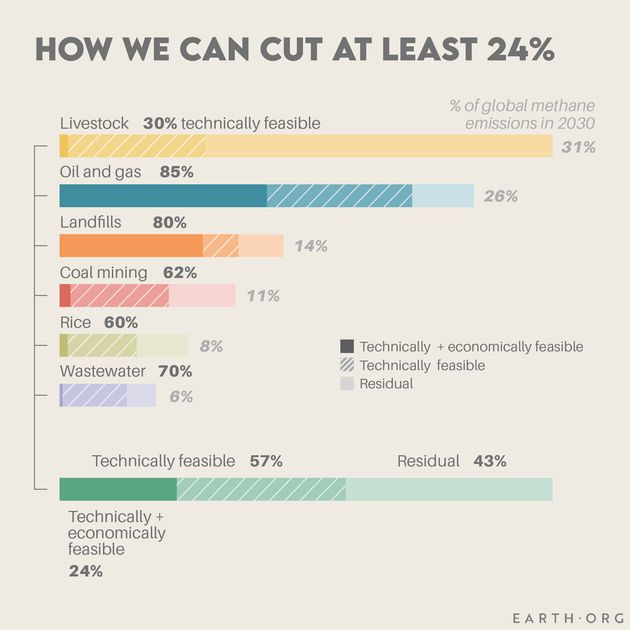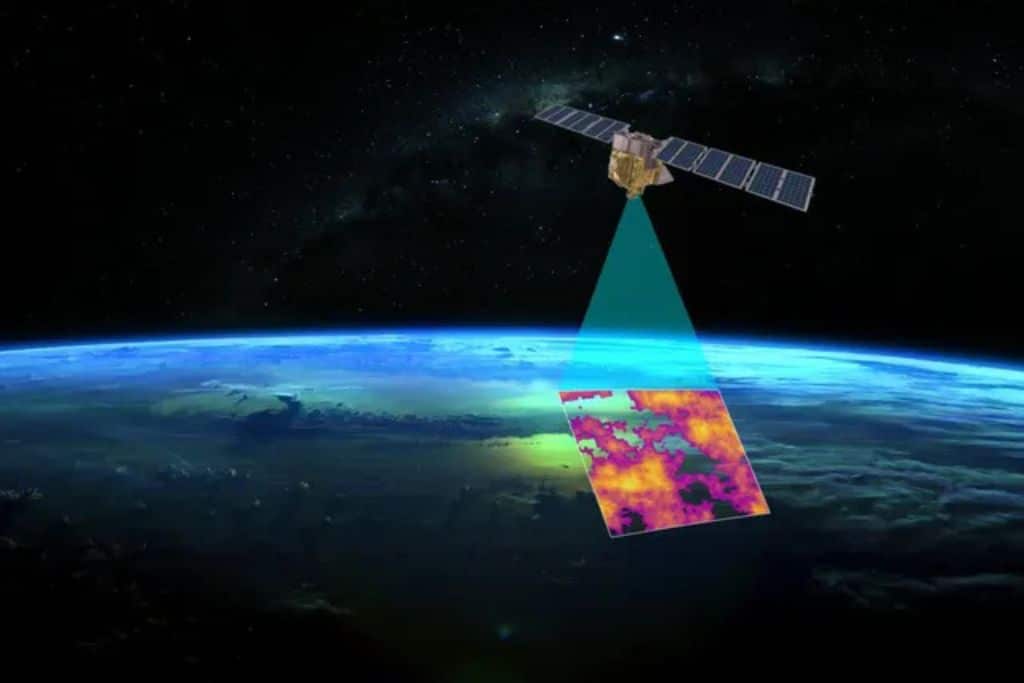The company announced it will also create a global map of oil and gas infrastructure to better understand what the main sources of methane emissions are.
—
A satellite that measures methane leaks from oil and gas companies around the world is set to launch next month as part of a partnership with the Environmental Defense Fund (EDF), Google announced last week.
The satellite, MethaneSAT, will orbit the Earth 15 times per day, surveying methane levels over the world’s largest oil and gas regions. The information collected will be processed through algorithms powered by Google Cloud and by the end of the year, the company expects to have data mapped for the whole world to see.
Methane is a major contributor to the total greenhouse gas (GHG) emissions – second only to carbon dioxide (CO2) – and it is responsible for about 30% of global warming. Though CO2 is more commonly and widely discussed, concerns about methane emission should not be ignored. Indeed, the gas is considered 84 times more potent in trapping the heat than CO2 over a two-decade period and it possesses a global warming potential 25 times more than that of CO2.
Global methane emissions have been on the rise, with an annual increase of 17 parts per billion in atmospheric methane in 2021, the largest annual increase recorded since 1983. Atmospheric methane levels are also shown to be 162% higher than pre-industrial levels, alarming the scientific community.
Agriculture is by far the biggest source of anthropogenic methane, with about 32% of total emissions originating from enteric fermentation and manure management. Another big contributor is the extraction, pumping, and transport of fossil fuels, which altogether contribute around 23% of total emissions.
More on the topic: What Are the Major Sources of Methane in the Atmosphere?
By collecting data on methane leakages and trace emissions back to their source, Google hopes to encourage energy companies, researchers, and the public sector to take action “faster and more effectively.” The satellite will also help identify the sources that contribute the most to methane emissions or that are most susceptible to leaks, the company said.

The news comes just days after a team of researchers unveiled new figures regarding a methane leakage that occurred at the Karaturun East oil field in Kazakhstan in June 2023 during expiration drilling at the well. They said the methane well is estimated to have released about 140,000 tons of gas into the Earth’s atmosphere in 205 days, an amount equivalent to 791,318 gas-powered cars being driven over a year. If confirmed, this would be the worst-ever blowout the world has ever seen.
International Progress
At the 2021 United Nations climate summit – COP26 – more than 100 countries joined the Global Methane Pledge, committing to cut methane emissions by 30% by 2030. And at last year’s summit in Dubai, new measures to tackle methane pollution were announced.
The US announced new rules to slash planet-warming methane emissions from oil and gas by nearly 80%. The biggest pledge came from 50 oil and gas companies – including giants ExxonMobil, Saudi Aramco, and Adnoc, ConocoPhillips, and BP – which signed up to the Oil and Gas Decarbonisation Charter sponsored by the COP28 presidency. By doing so, they agreed to stem releases of methane to near zero by 2030 and stop routine flaring of natural gas. While the targets are not legally binding, signatories – which together account for about one-third of global oil and gas production – have to submit a plan to meet them by 2025.
The World Bank also announced a multi-donor trust fund that will mobilise an initial US$250 million to help developing nations cut CO2 and methane emissions generated by the oil and gas industry. The initiative secured US$25 million each from six major oil companies, including BP, Eni, Shell, and TotalEnergies. Some countries also pledged money to the Fund, including the United Arab Emirates ($100 million), the US ($2 million), Germany ($1.5 million), and Norway ($1 million). Remarkably, big players Chevron and Exxon Mobil opted out. The Bank also said it intends to launch at least 15 country-led programs in the next 18 months with the aim to slash up to 10 million tons of methane.
Featured image: Google
You might also like: Did COP28 Succeed or Fail?


















